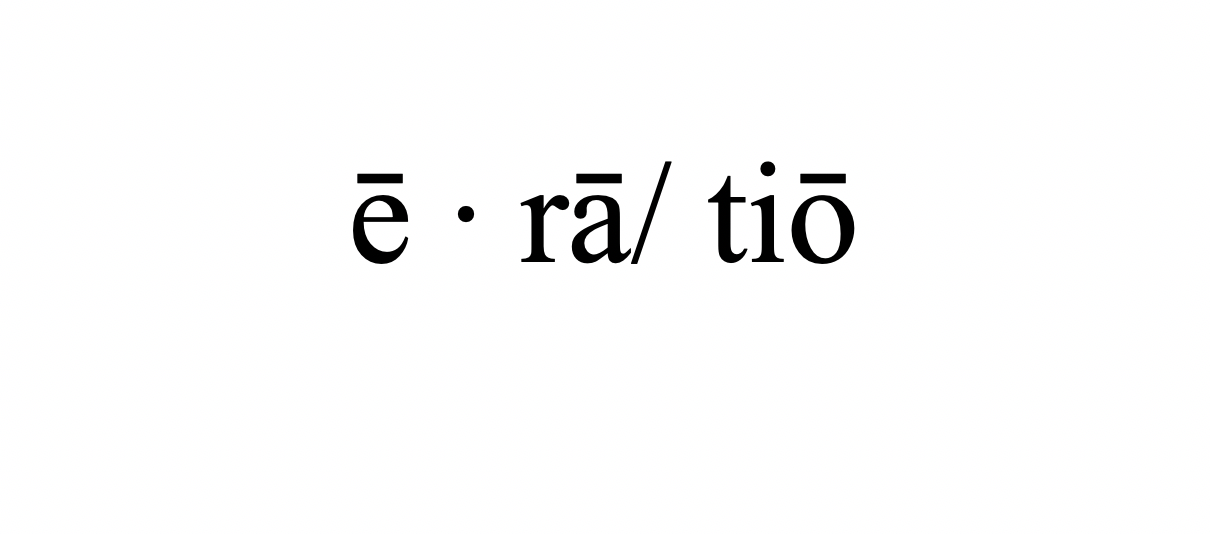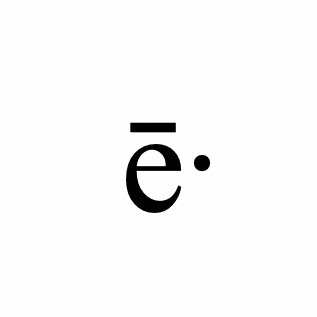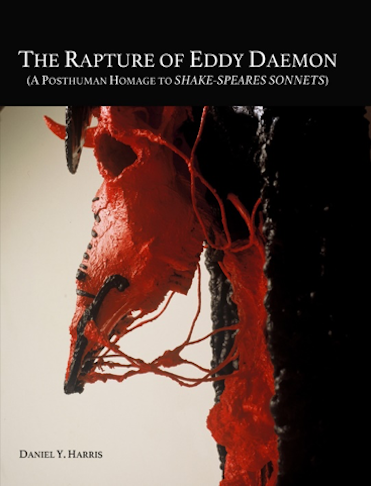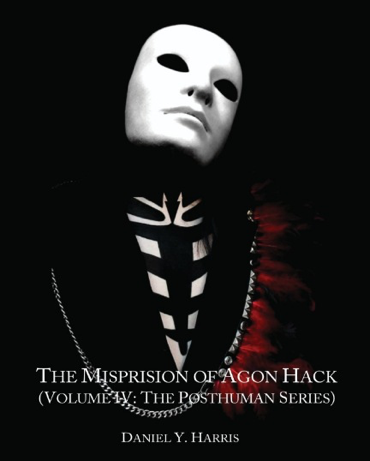Daniel Y. Harris
interviewed by Gregory Vincent St. Thomasino
2023
The Posthuman Series (Volumes I-V), An Entrevenue
You describe yourself as an “extreme experimentalist.” I’d like to explore the path (the evolution?) that led you to this position, to this approach, to this point of view. My impression is: this is not just a matter of the poetry; rather, this is whole, this is existential, this is the whole person. How did you get here? What happened?
This nomenclature “extreme experimentalist” is augmented by the precursory “extreme:” (from Old French extreme, from Latin extrēmus as well as the “xtreme” brand of the digital age—the extreme outer edge from which no proximity has been calibrated). The successor “experimentalist" (from the Latin experior, “to experience, to attempt”, itself from ex + perior) pins its ethos to the concept of anticlosure where invention supersedes all actuality by reaching beyond the pale of a normative epistemology.
This “evolution” (from the Latin ēvolvō (“unroll, unfold”), from ex + volvō (“roll”) into “extreme experimentalism” which is, exactly as you aver, via an existential embodiment of the “whole person,” occurred through a multifaceted agonic escrime with Sigmund Freud’s ego psychology of das Es, Ich, and Über-Ich and Harold Bloom’s The Anxiety of Influence, Kabbalah and Criticism and A Map of Misreading, Jacques Derrida’s L’écriture et la différence and the posthuman zeitgeist of six computer hacker genera: Black Hat Hackers, White Hat Hackers, Grey Hat Hacker, Red Hat Hacker, Blue Hat Hackers and Green Hat Hackers exploiting their combined malwaric weltanschauung. The hack: to phreak, to phrack, to encrypt, to frob, to tweak, to unleash cryptoviral extortion protocols (malware, ransomware), to patch, to crack, to siphon, to breach the defenses and exploit the weaknesses in a computer system or network. The results are The Resurrection of Maximillian Pissante 1, Volume V (BlazeVOX, 2022), The Misprision of Agon Hack 2, Volume IV(BlazeVOX, 2021), The Reincarnation of Anna Phylactic 3,Volume III (BlazeVOX, 2019), The Tryst of Thetica Zorg 4, Volume II (BlazeVOX, 2018) and The Rapture of Eddy Daemon 5, Volume I (BlazeVOX, 2016), which are part of the five volumes to date of the Posthuman Series 6.
The grand uberpoesis emerged from its chimerical, precyborgic nature as the posthuman viscerality of a unique, cybergoth fashion and extreme experimentalist poetic trope. By cybergoth fashion, the invented, androidal author Daniel Y. Harris dons long, salt and pepper hair below a Deadman Jaxon with affixed bat scarab, Scully black and red shirts with studs, leather pants, leather boots and leather vest, scarf and scull rings and necklaces. (By contrast, the precursory, preandroidal author Daniel Y. Harris [the incubationary, pre-posthuman] donned a perfectly manicured, short and neat coiffure replete with business casual sports coat, slacks and dress shoes.)
By extreme experimentalist poetic trope, the posthuman Daniel Y. Harris emerged from the zeitgeist of the Black Hat Hacker, Miraibots and DDoS malware, cybernetics, genomics, neural interfaces, algorithmics, molecular nanotechnology (MNT), whole brain emulation (WBE), IMs (instant messaging), IRCs (internet relay chat) and (MMORPGs) massively multiplayer online role-playing games. (By contrast, the precursory Daniel Y. Harris [the incubationary, pre-posthuman] siphoned his poetic tropes from Kabbalah, Gnosticism, Hermeticism, to the Shoah and to what Harold Bloom dubbed “Figures of Capable Imagination” or Coleridge, Pater, Whitman, Dickinson, Emerson, Crane, Stevens, Ashbery, Ammons, Hill and Hollander.)
Signs of this metamorphosis (from the Ancient Greek, metamórphōsis, to morph), in its precursory viscera/ephemera occurred in two volumes predating The Posthuman Series. Those volumes are Hyperlinks of Anxiety 7 and The Underworld of Lesser Degrees 8, where the precursory conjoinment of the history of poiesis: from Ancient Greek: ποίησις, to make, and poesis: of poetry, ἡ π. τῆς τραγῳδίας, etc., poetic faculty, poesy, art of poetry, with the history of ALife: (ALife, AI, EA, CA, ANNs, NNs, SRAs, GAs, SynBios, Synthia, synthetic genomics, biomimicry, evolutionary dynamics) emerges.
from Hyperlinks of Anxiety:
Confessions of a Blogger
Add a mix of theurgy
and hyperlink to neuts of gramme—I spin
henosis in blogland: neurons
in the wet gauze
of def, spores of tag—the zot in the stasis
of the Web:
digits
for countless others probing
the Net for my name—
me numbered, me squared
to a thousand and one
nights of the boolean me:
tapered
linkrot of vanity
shaping me as helicoid
in search of myself—to break
me, pulp my savage accent,
my hack-herd packing words
in viruses with a thin
mdash.
from The Underworld of Lesser Degrees:
excerpt from “The Temptation of Rachel Godbot”
(Lines 55-62)
In listserves, she is initiated into the new 4G illuminati.
Her robo-sensitive, ganglionic eyes begin adamic naming:
botnet, botherd, ibot, verbot, cleverbot, twitterbot,
infobot, shopbot, votebot, pricebot, botmaster; i.e.,
the renaissance bot (black, blue, white and grey hat
hackers), as well as dosbot with supplied password
against plaintext strings of cryptographic hash such
as MD5 and SHA-1, salted for tight security.
Imagination (from Middle English ymaginacioun, from Old French
imaginacion, ymaginacion, from Latin imāginātiō) is a giant, agonic Satan (John Milton’s Satan) with three faces and bat wings below his chin. He broods, [from Old English brōd (“brood; foetus; breeding, hatching”)] over the abyss and impregnates all its demonic homunculi. The impregnation is a devouring (re: Goya’s Saturn). All precursory homunculi emerge in a new, daemonic amniotic fluid preparing to devour all rival homunculi like mad Nephilim. Ymaginacioun is Satan.
The tropes (neuts, gramme, zot, helicoid) in Hyperlinks of Anxiety are devoured by the tropes (4G illuminati, botnet, botherd, ibot, verbot, cleverbot, twitterbot, infobot, shopbot, votebot, pricebot, botmaster) of The Underworld of Lesser Degrees, which are in kind devoured by The Rapture of Eddy Daemon, emerging in this first volume of The Posthuman Series in the protagonist Eddy Daemon. By lunatic, if not misprisionary revelation only augmented by malware code ((Mirai Botnet in 2016: if ((fd = socket(AF_INET, SOCK_RAW, IPPROTO_UDP)) == -1))) as the “moribund prior” of Bereshit Bara, Eddy Daemon’s the Black Hat Hacker YHWH’s adamic invention emerging to devour Ymaginacioun as Satan.
from The Rapture of Eddy Daemon
Volume I, The Posthuman Series
Rewritecond //:http%2://%{HTTP_HOST}[R=301]
Eddy’s avatar is DDoS, beast of sick overload. Notice
the trigger errors in the microcode of the machine. It’s
all in the thrashing and resource starvation: forge, spoof,
smurf and the proverbial ping of death unleash biatches
of malware. Today’s a la carte menu features the SYN
flood, Teardrop attack, Peer-to-peer attack, Nuke attack,
OWASP HTTP Post Denial Tools and the ever spicy
R-U-Dead-Yet? Eddy floods the bandwidth, rememes
DDoS, GDoS, the microaggression rebooted cleanse
with a theurgical gassing. This is Eddy’s respoofed
packet of derailment, his avatar gone viral as ripped
off Theater of Cruelty busting up firewalls and BSBs
synproxies. Face it, Eddy cops a grin, his godhead
has an ISP hagiography of saint-zippered droidals.
The first, posthuman protagonist and Red Hat Hacker, Eddy Daemon is a DDoS avatar (a mad Nephilim), who impregnates his precursors with SYNflood, Teardrop attack, Peer-to-peer attack, Nuke attack, OWASP HTTP Post Denial Tools and the ever spicy R-U-Dead-Yet? The hypernarrative (still human in their uberhuman spiritus) poesis of Hyperlinks of Anxiety and The Underworld of Lesser Degrees become digital seedpods devoured by a posthuman body snatcher named Eddy Daemon.
1. Harris, Daniel Y. The Resurrection of Maximillian Pissante, Volume V, The Posthuman Series. Kenmore, NY: BlazeVOX [Books], 2022. The Resurrection of Maximillian Pissante is a misprision of the 118 chemical elements of the periodic table divided into 118 sections. The protagonist, Maximillian Pissante, is malware as Sigmund Freud, Black Hat Hacker.
2. Harris, Daniel Y. The Misprision of Agon Hack, Volume IV, The Posthuman Series. Kenmore, NY: BlazeVOX [Books], 2021. The Misprision of Agon Hack is a misprision of the 128 specific characters of ASCII (American Standard Code for Information Interchange), divided into 128 sections. The protagonist, Agon Hack, is malware as Harold Bloom, Black Hat Hacker.
3. Harris, Daniel Y. The Reincarnation of Anna Phylactic, Volume III, The Posthuman Series. Kenmore, NY: BlazeVOX [Books], 2019. The Reincarnation of Anna Phylactic is a misprision of the base 10 numeral system, divided into 10 sections entitled “Unary,” “Binary,” “Ternary,” “Quaternary,” “Quinary,” “Senary,” “Septenary,” “Octal,” “Novenary” & “Decimal.” The protagonist, Ann Phylactic, is malware as Emily Dickinson, Blue Hat Hacker.
4. Harris, Daniel Y. The Tryst of Thetica Zorg, Volume II, The Posthuman Series. Kenmore, NY: BlazeVOX [Books], 2018. The Tryst of Thetica Zorg is a misprision of the 116 cantos of Ezra Pound, divided into 116 sections. The protagonist, Thetica Zorg, is malware as Ezra Pound, Red Hat Hacker.
5. Harris, Daniel Y. The Rapture of Eddy Daemon, Volume I, The Posthuman Series. Kenmore, NY: BlazeVOX [Books], 2016. The Rapture of Eddy Daemon is a misprision of the 154 sonnets of William Shakespeare, divided into 154 sections. The protagonist, Eddy Daemon, is malware as William Shakespeare, Red Hat Hacker.
6. A complete listing of Daniel Y. Harris’ The Posthuman Series, replete with praise, reviews, interviews and emulations, can be perused at DanielYHarris.com/the-posthuman-series.
7. Harris, Daniel Y. Hyperlinks of Anxiety. Somerville, MA. Červená Barva Press, 2013.
8. Harris, Daniel Y. The Underworld of Lesser Degrees. New York, NY: NYQ Books, 2015.
The influence of technology, of AI, and, for instance, of the ChatGPT, on poetry. Where do you stand? What does it mean in relation to your work—and indeed to your “Posthuman Series”? (Are you a “biomorph,” are you a “cyborg”? What do you see as the evolution of the poet and of poetry that you need to open our eyes to?) William Blake wrote, in his poem, “Auguries of Innocence,” To see a World in a Grain of Sand / And a Heaven in a Wild Flower / Hold Infinity in the palm of your hand / And Eternity in an hour. Is it all, ultimately, a matter of code? What does Rebbe Daemon say?
Technology is the “spiritus” (espirit, spīritus, (s)peys-, inspire, respire, transpire, spīrō, gast, ghost, sprite), the “geist” (gaistaz, ǵʰóysdos, geast, zest, Holy Ghost) and the “neshamah” (kapára aláyikh n’shamá, Tanakhic breath)—that is the core influence (īnfluentia, īnfluēns, īnfluō; doublet of influenza) on the Posthuman Series. Technology’s influence is the grand aporia, the archeocryptography of a supermassive blackhole in the anxiety of influence contaminated by an apophrades in its grammatology: (tekhnología, “systematic treatment (of grammar)”), tékhnē, “art”) + (-logía, “study”). Synchronically analyzable as techno- + -logy. Furthermore, technology’s influence on the Posthuman Series is misprisionary.
“Misprision” (from the Old French: mesprendre, from the modern French: se méprendre, “to misunderstand”) is a term from English Law (treason, felony) which Harold Bloom siphoned to categorize the agonics (or six revisionary ratios) of poetic influence: clinamen (poetic misreading), tessera (completion and antithesis), kenosis (breaking device similar to the defense mechanism), daemonization (a movement towards a personalized counter-sublime), askesis (a movement of self-purgation) and apophrades (the return of the dead). In order to enhance fluidity and interchangeability, literary theory mixes with tékhnēmorphology, the trope of misprision melds the six revisionary ratios with macros enabled for SMS spoofs (via bruteforce attacks, scareware, botnets, a man in the middle (MITM) attacks and malvertizing campaigns) to the DEFCONic zeroday vectors targeting IT Systems with malicious malware from Kur, Hades, and Sheol proxied in Morris Worm, Nimda, ILOVEYOU, SQL Slammer, Stuxnet, CryptoLocker, Conficker Tinba, Welchia and Shlayer.
Artificial intelligence disseminated via Open AI’s ChatGPT, or through ScienceSoft, InData Labs, iTechArt, Innowise, ThirdEye Data, DataRoot Labs, DataRobot, Master of Code Global, H2O, IBM, Hatchworks Technologies, CloudMinds, Fayrix, STX Next, Xicom Technologies, DICEUS is foundational to the Posthuman Series, as the Posthuman Series all but predicted its advent.
The author, Daniel Y. Harris, the protagonist and archemetaleptic Black Hat Hacker of the Posthuman Series, joins single volume protagonists Eddy Daemon, malware as William Shakespeare, Red Hat Hacker, Thetica Zorg, malware as Ezra Pound, Red Hat Hacker, Anna Phylactic, malware as Emily Dickinson, Blue Hat Hacker, Agon Hack, malware as Harold Bloom, Black Hat Hacker and Maximillian Pissante, malware as Sigmund Freud, Black Hat Hacker. Daniel, Eddy, Thetica, Anna, Agon and Maximillian are melds of cyborgs and biomorphs. They are cyborgobiomorphs and biomorphocyborgs, augmented by the hacker underworld with its archons who form a synthetic symbiosis of the eschaton (Proto-Indo-European eǵʰs-katos, from ἐξ (ex, “out”) or the ἔγκατα (énkata, “intestines”) and the hyperdifficulty of ἐχθός (ekhthós) = ἐκτός (ektós) (kairos eschatos, chronos eschatos (also plural), eschaton tou chronou, hora eschate) and the messiah (a messiah or messias, Hamashiach) (Hebrew: מָשִׁיחַ , romanized: māšīyaḥ; Greek: μεσσίας, messías; Arabic: مسيح , masîḥ; lit. ‘the anointed one’) a saviour or liberator of a group of people.
Contemporary poetry in the guise of Asemics, Beat, Bricolage, Concrete, Conceptual, Confessional, Dadaism, Digital, Erasure, Ergodic, Flarf, Fluxus, Haptic, Hinge, Language, Objective, Oulipo, Neoprimitivism, Pataphysics, Postbeat, Postdada, Postconceptualism, Postconfessional, Postmodernism, Postobjective, Poststructuralism, Postsurrealism, Surrealism, Uncreative Writing and Vispo, in order to defray entropy, stasis, redundancy and the funerary blank of obsolescence may be compelled to conjure Harold Bloom’s satanic criticism (Satan is the model adversary) and devour William Blake’s World in a Grain of Sand. That devouring which we described earlier as “All precursory homunculi emerge in a new, daemonic amniotic fluid preparing to devour all rival homunculi like mad Nephilim,” transmogrifies the “grain” into the antecedents andro, ante, anti, arche, auto, biblio, cata, cede, cise, corpo, crypto, dys, epi, gram, hyper, lex, litho, memori, meta, morpho, necro, neo, omni, para, paleo, poly, post, pneumo, proto, retro, techno, termina, theo, trans and ur, hybridized by the predicates HTML with JavaScript, BASIC, C, C++, COBOL, CSS, Python, Pseudocode, Found Code, PHP and Laravel, Command-Line Executions and Git, Error Logs from MVN and Katalium.
The results of these antecedent/predicate impregnations/hybridizations is an eyeopener: “archeKe3chang,” “cryptoKoobface,” “memoridaprosy”—a new, posthuman language is invented from the essentiality of code. Let’s briefly dissect “archeKe3chang.” “Ke3chang” is a threat group attributed to actors operating out of China. Ke3chang has targeted oil, government, diplomatic, military, and NGOs in Central and South America, the Caribbean, Europe, and North America since at least 2010. “Arche” is from the Ancient Greek ἀρχή (arkhḗ, literally “beginning, origin”)—in Jacques Derrida “Arche-writing” (French: archi-écriture “arche-” meaning “origin,” principle, or “telos” refers to an abstract kind of writing that precedes both speech and actual writing. Thus, “archeKe3chang” is a threat actor or hacker clan that precedes both speech and writing. The literary hacker is both preprimordial and postprimordial—source code infiltrates the Western Canon and subsumes all its classical tropes.
Reb Daemon, our first posthuman protagonist, accurately titular with the honorific “Reb” [Rebbe (Yiddish: רבי , romanized: rebe) or Admor (Hebrew: אדמו״ר ) the spiritual leader in the Hasidic movement, and the personalities of its dynasties, or in the case of The Rapture of Eddy Daemon, Reb of the Posthuman Series] says:
from The Rapture of Eddy Daemon
Volume I, The Posthuman Series
Invokevirtual #16; //ethod java/io/PrintStream.println:(I)V
Nvokes an interface ethod on object objectref, whereas interface
ethod is identified by ethod reference index in constant poolix
(indeddyxbyte1 << 8 + indeddyxbyte2) and count is the number
of arguments to pop from the stack frame including the object
on which the ethod is the sabprimd Eddy Daemon or greater
than or equal to 1 jump to subroutine at branchoffset (signed int
deconstrax ursigned bytes branchbyte1 << 24 + branchbyte2
< 16 + brdaemonnchbyte3 < 8 + branchbyte4) and the return
address on the stack pushes a constant #index from a constant
pool (string, int, float or class type) onto the stack (wide index
to deconstrax as indexbyte1 << 8 + ideddyxbyte2) ext opcode,
where opcode is either iload, fload, aload, lload, dload, istore,
fstore, astore, lstore, dstore, or ret, to assume the index is 16 bit;
or execute minc, when the index is 16 bits of a bagouted E.bot.
To briefly dissect “the ethod is the sabprimd Eddy Daemon,” “ethod” is a useful, repeatable, and most importantly, accurate piece of acquired language. “Sabprimd” is a hoax word, a zeroday avatar for spam newly acquired to convey the savage appeal of the new posthuman ethos. In sum, “the ethod is the sabprimd Eddy Daemon,” says that Eddy Daemon is the new artificial anthropoid usurping his place in the Western Canon.
I’d like to run a term by you and ask if it has any meaning, any implication, any usefulness for you: the term is “the communicative value of discourse.” And I would ask: in your work, is poetry a matter of discourse? And if so, or if not, what does poetry have to say (or have to “communicate”)? Is poetry a “communication medium”? Is there more there than meets the eye? What’s the message, or is the message the medium? (You remind us in Volume IV that “ASCII was developed from telegraph code.”) And I want to say: reading The Posthuman Series is an exhausting (dare I say demanding) experience. I can barely get through a stanza than I find myself in some far-flung region of the universe of information, of theoretical and practical information, and I do not have all this at my command, and I have to discover for myself what is that and what is its significance for this text, for this reading, for me as a reader? Is the “posthuman” mind a computer, is it a cosmic consciousness. . . ?
“The communicative value of discourse,” bears a modest import if understood in proximity to the high inventiveness (from middle English: inventif, inventyfe, inventiff, inventyf) of extreme experimentalism. To bear witness to the question “is poetry a matter of discourse?—” the answer can be best elucidated as the Posthuman Series is a matter of metadiscourse, if one is obliged to employ “discourse.” Discourse [from Middle English discours, borrowed from Middle French discours (“conversation, speech”), from Latin discursus (“the act of running about”), from Latin discurrō (“run about”), from dis- (“apart”) + currō (“run”). Spelling modified by influence of Middle French cours (“course”). Doublet of discursus.] is severely augmented in the Posthuman Series—metadiscours, metadiscursus, metadiscurrō.
The Posthuman Series is far more than a “communicative medium.” The message, if one were to respectfully reduce its near algorithmic infinity to a medium/message bipolarity, is that the Posthuman Series in a new hyperlingua franca comprised of algorithms with rhizomatic and misprisionary contours: aporiac, siphonic, doxic. It conveys that its emergent hypertextual hematopoiesis and autopoiesis, implode biocentrism with a theurgical postcyborgicsim which bodyhacks. Algorithms and genomes reemerge as algorithmicgenomes.
The protagonists “Maximillian Pissante,” “Agon Hack,” “Anna Phylactic,” Thetica Zorg” and “Eddy Daemon” are babelian in their glossolalia, siphoning their lexicon from Aramaic, Arabic, English, Esperanto, French, German, Greek, Hebrew, Italian, Latin, Puebloan, Russian, Spanish and from Javascript, Python, Go, Java, Kotlin, PHP, C#, Swift, R, Ruby, C and C++, Matlab, TypeScript, Scala, SQL, HTML, CSS, NoSQL, Rust, Perl.
In The Misprision of Agon Hack, Volume IV, the infrastructure in indeed a misprision of the 128 specific characters of ASCII (American Standard Code for Information Interchange), divided into 128 sections. As this infrastructure is a misprision (all the volumes of the Posthuman Series are misprisionary), its poesis is misprisionary as it imaginatively, as we said, seeks, in part, to conjoin the history of poiesis:from Ancient Greek: ποίησις, to make, and poesis: of poetry, ἡ π. Τῆς τραγῳδίας, etc., poetic faculty, poesy, art of poetry, with the history of ALife: (ALife, AI, EA, CA, ANNs, NNs, SRAs, GAs, SynBios, Synthia, synthetic genomics, biomimicry, evolutionary dynamics).
The Posthuman Series is, indeed, a magnus opus of difficulty. It is demanding, exhausting, ubercomplex, soaring toward a “far-flung region of the universe of information, of theoretical and practical information.” The posthuman mind is a computer with a cellular/algorithmic interface. The posthuman mind is also a “cosmic consciousness” with a trajectory that metamorphoses from its canonical coordinates into an accretion disk, by way of a quantum (QSL), via a redshift though a black hole expanding at H0 = 73.24 ± 1.74 (km/s)/Mpc.
The reader of the Posthuman Series is held in very high esteeme. With the heuristic tools of a grand poesis/grand AI, the reader is in discovery on an infinite trajectory of a difficult new knowing. One enters the Posthuman Series the way one would enter The Black Swan Theory, The Potato Paradox, Simulacra and Simulations, The Dichotomy Paradox, Vasiliev Equations, Maxwell’s Equations, Gödel’s Incompleteness Theorem, The Theory of General Relativity, Quantum Mechanics and The Event Horizon of a Four Dimensional Black Hole.
Here’s Agon Hack:
from The Misprision of Agon Hack
Volume IV, The Posthuman Series
“ASCII code 00 = NULL” (Lines 18-25)
RotatePt_2D <- function(x, y, angle){clinamen,
tessera, kenosis, daemonization, askesis,
apophrades} in greasy soil,
in burnt bone. Dysaesthesia’s
axehead ensures that no tuple returns false in calcite
and limestone. As heterocarpous (mesh_segment_by_path
(mesh, lms = NULL, path.choice
=“ridges”), intestines
spill in thick ropes.
Here’s the exegesis:
Agon Hack’s Migdal Bāḇēl in enumerative and extremal combinatorics in “ASCII code 00 = NULL” (Lines 18-25) from The Misprision of Agon Hack, lines 8-10, “RotatePt_2D <- function(x, y, angle){clinamen,/tessera, kenosis, daemonization, askesis,/apophrades}, begin with a formula for rotating a vector in 2D, when the vector (x1,y1)(x1,y1) has a length of LL. The angle between (x1,y1)(x1,y1) is the x-axis: α or the álpha. Via álpha the rotating formula in 2D angles conjoin the six revisionary ratios to become multiversic in “greasy soil, in burnt bone.” Edenic clay and adamic bone are, as ASCII code 00 = NULL, implanted key-stroke monitoring programs created by Agon Hack to steal creation myth data: the NULL in the inflationary epoch (5.39×10−44 s, Planck Time). Then, due to Agon’s primordial key-stroke monitory program, “dysaesthesia’s” (abnormal sense of touch/Michelangelo’s “The Creation of Adam” with its index finger sparks) “axehead” or the finger’s bitblade “ensures that no tuple returns false in calcite/and limestone.” A “tuple” is defined inductively using the construction of an ordered pair. It is finite, fallen. Agon guarantees that it will never return “false” in its ancient, archeological correlatives of alabaster (“calcite”) and “limestone.” Heterocarpy will triumph: apple, pomegranate, fruitfly malware, coded in git to generate ASCII code 00 = NULL algorithms. These algorithms are the “intestines” in “thick rope” (or as a null-terminated string) in Agon Hack’s new, posthuman body.
Daniel Y. Harris is indeed an extreme experimentalist. His Posthuman Series includes The Resurrection of Maximillian Pissante, Volume V (BlazeVOX, 2022), The Misprision of Agon Hack, Volume IV (BlazeVOX, 2021), The Reincarnation of Anna Phylactic, Volume III (BlazeVOX, 2019), The Tryst of Thetica Zorg, Volume II, (BlazeVOX, 2018) and The Rapture of Eddy Daemon, Volume I (BlazeVOX, 2016). His extreme experimentalism has been published in Alligatorzine, BlazeVOX, The Denver Quarterly, Dichtung Yammer, E·ratio, European Judaism, Exquisite Corpse, Marsh Hawk Press Review, The New York Quarterly, Notre Dame Review, perspektive, Poetry Salzburg Review and Word For/Word. He is the Publisher of Var(2x). His website is DanielYHarris.com.



